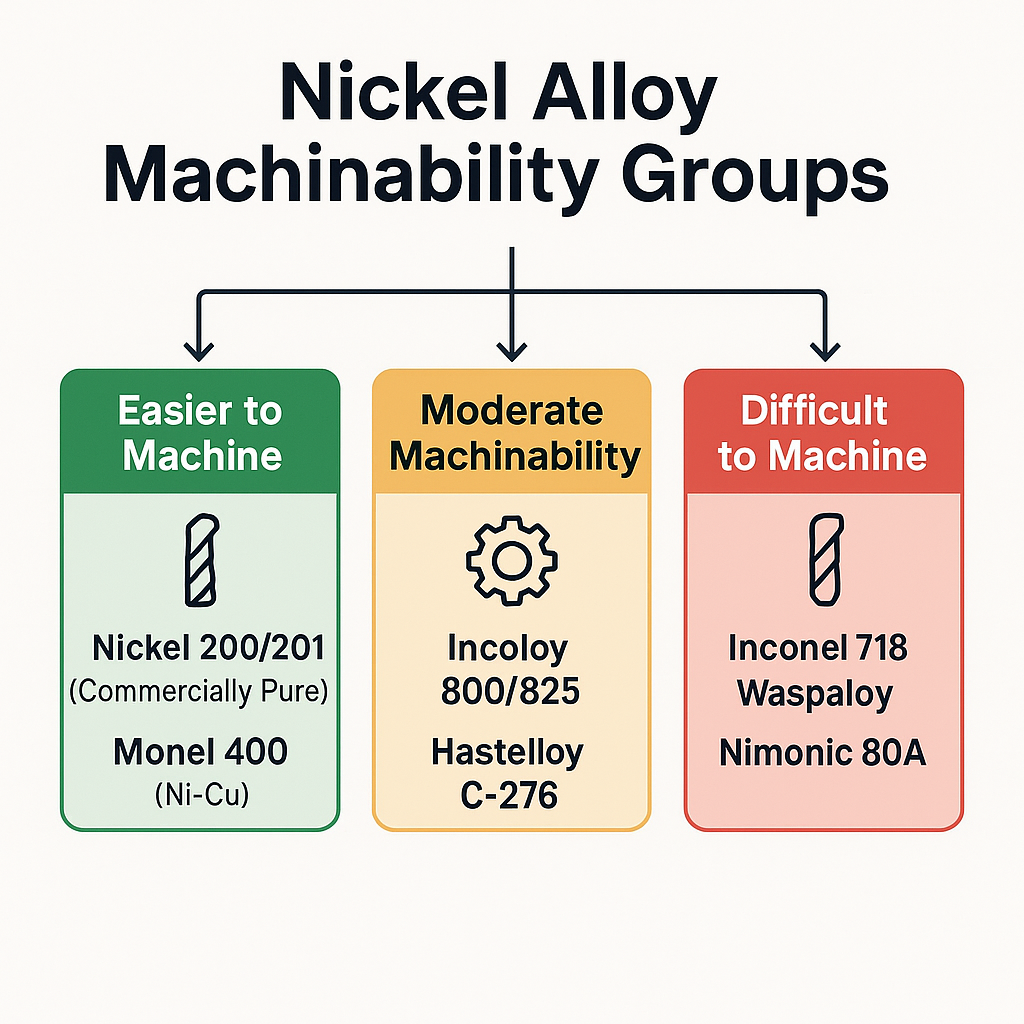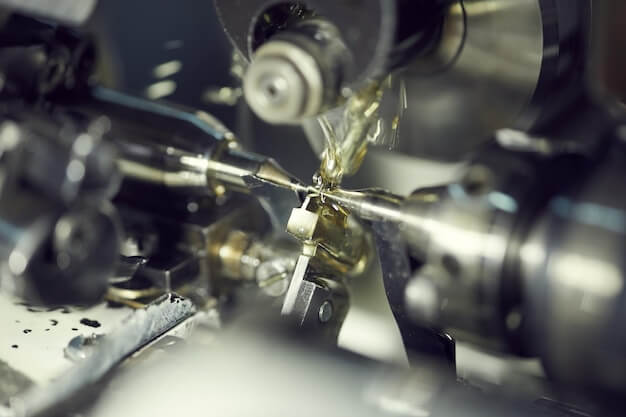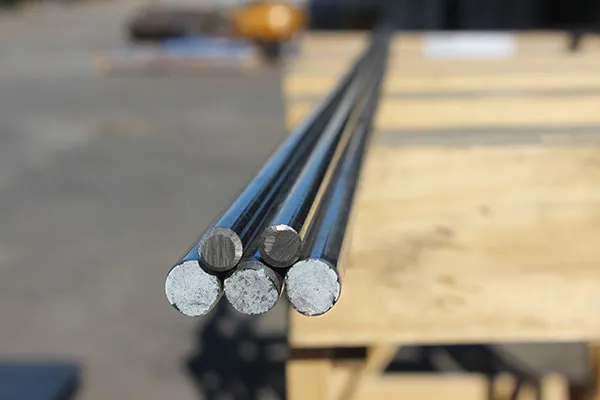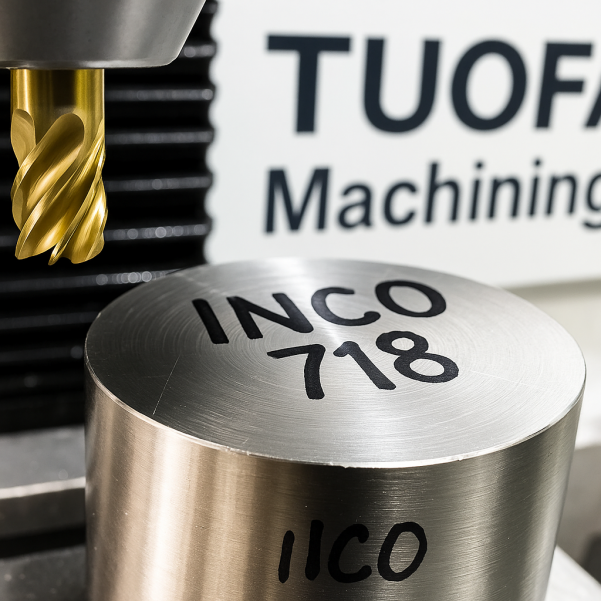Machining Nickel Alloys: Is It Difficult to Machine?
 May 19,2025
May 19,2025

Nickle alloys are becoming popular across various industries due to their unique and valuable mechanical and chemical characteristics. They also exhibit high corrosion and elevated temperature resistance. However, machining nickel alloys is difficult to machine due to getting work hardened easily. Fortunately, using the correct approach can make it machining easy. This article will highlight all the essential information about machining nickel alloys.

Why Is Nickel So Hard to Machine?
Machining of nickel alloys is challenging because of its abrasive nature, heat buildup, and rapid work hardening. It can lead to tool wear and dimensional inaccuracies. High heat can also lead to warping in the alloy.

Material Properties of Nickel & Nickel-Based Alloys
Nickle and its alloys are famous for their corrosion resistance, high strength and heat resistance. They are versatile when combined with other elements and produce alloys with unique properties. Nickle plating is also used widely where a thin nickel layer is applied on other metals to enhance properties.
High Tensile Strength and Elasticity
Ni alloys have higher strength and toughness than pure Ni. Tensile strength can reach up to 1,000Mpa and Young's modulus to 210GPa. This is due to high mechanical properties when Ni combined with other elements.
Low Thermal Conductivity and Heat Concentration
Ni alloys have high heat resistance and lower thermal conductivity. The alloying agents in Ni-alloys disturb the regular atomic arrangement in nickel lattice and obstruct the heat energy flow. Pure Ni has thermal conductivity of 106 W/m-K at room temperature, but its alloys have lesser heat conduction.
Chemical Reactivity with Cutting Tools
Ni alloys have higher chemical reactivity with cutting tools. This is because of high heat generation during operation and abrasive carbide presence within the alloys. This leads to different wear mechanisms like adhesion and diffusion.
Nickel Alloy Groups and Relative Machinability
The presence of high Ni content significantly impacts their machinability. Nickel content with 25% to 65% Ni can enhance corrosion resistance. However, machining becomes difficult due to higher work hardening rate and shear strength
Pure Nickel Grades (Nickel 200 / 201)
Pure Ni grades like UNS N02200 or UNS N02201 have very difficult machining due to gummy chip behavior. Ni generates tough string chips that are difficult to remove and wrap around the tool. Nickle 201 also generates high heat which can result in tool wear and dulling. Machining nickel 200 requires sharp cutting tools, sufficient feed rate and depth of cut to avoid these issues.

Ni-Cr Austenitic Alloys (Alloy 600, 625)
Ni-Cr alloys (600 or 625) are face-centered cubic crystal structured alloys which are highly corrosion resistant. They are non-magnetic and have high workability, high temperature resistance and strength. Alloys 600 and 625 are known for their machinability properties in the annealed condition. For CNC machining nickel, hard tools like carbide or high-speed steel are recommended.
Superalloys (Inconel 718, 725)
Inconel 718 and 725 are very demanding in aerospace and oil and gas industries. This is due to their high corrosion resistance and strength. However, they possess low thermal conductivity and rapid work hardening ability. This eventually results in difficult machining operations. It can cause poor surface finish, rapid tools wear and high cutting forces.

Cast Nickel vs. Wrought Nickel Materials - Key Differences
Cast nickel 201 materials are formed by pouring molten metal into mold. And wrought nickel is produced by mechanical deformation like forging or rolling. Machining Nickle 200 is difficult due to defects like porosity and non-homogenous microstructure. Wrought nickel has a uniform microstructure and is more ductile which makes machining easier.
5 Core Machining Operations: Challenges & Quick Fixes
As mentioned above, nickel and their alloys have unique challenges during machining. To mitigate these challenges, strategic approaches are required like using optimized cutting speed and feed rate, specialized tooling, and programing strategies.
1.Turning Nickel Alloys
In turning, a cutting tool on lathe machine removes material from a rotating nickel workpiece and creates a cylindrical shape. Common challenges are work hardening, high heat generation and tool wear for CNC machining nickel alloys. It can be fixed by using carbide or ceramic tool with a positive rake angle, high cutting speed and steady flow coolant.
2.Milling Nickel Alloys
Milling operations use a rotating cutting tool to remove material and to create a desired shape of Nickle-based workpiece. Common milling challenges are work hardening, chip loading and chatter. These can be fixed by using positive cutting angle tools, high power-machines and avoiding low feed rate.
3.Drilling & Reaming Nickel Alloys
Drilling and reaming use a rotating cutting tool, like a drill bit, to form holes in nickel alloys. Common challenges occur in deep hole drilling like high heat, tool wear and work hardening lid material. They can be fixed by using insert or cobalt drills for twist drills. Ensure consistent drill speed during facing, boring and tuning and use coolant.
4.Tapping & Thread Milling Nickel Alloys
Tapping nickel is creating internal threads, and threading creates external threads inside a hole in nickel alloys. Common CNC machining nickel challenges are work hardening and tool wear which can be mitigated by using high-quality taps and using proper coolant and to avoid threading too quickly.
5.Grinding & Honing Nickel Alloys
Grinding and horning are material removal process to obtain surface finish and geometric accuracy of nickel-based alloys. Common challenges that occur during surface grinding and internal horning are grinding wheel wear and poor surface finish due to high hardness of workpiece. The nickel machining tips are using hard and tough grinding wheels, optimizing grinding parameters and using coolant properly,
Heat and Chip Management Tricks
For effective some nickel machining tips include using heat and chip management strategies by using high-pressure coolants to dissolve heat and remove chips and using suitable cutting parameters and tool geometries.
Cryogenic Machining with Liquid Nitrogen
Cryogenic machining with liquid nitrogen especially for Inconel 718 significantly improves their machinability. It also improves surface finish, tool life and reduce cutting forces. Cutting zone is rapidly cooled down which modifies the material's properties and minimizes friction. However, long-time cryogenic cooling may affect the mechanical properties of nickel alloys and tool wear.
Indexable Inserts with Optimized Flute Coolant Ports
Indexable inserts with optimized coolant ports are important for efficient machining results of nickel alloys. Coolant dissolve heat, lubricate the cutting area and easily remove chips, which overall essential for good surface finish and tool life. These coolant ports also reduce machining costs and improve material's performance
Toolpath Strategies to Minimize Dwelling and Re-Cutting
To minimize dwelling and re-cutting, use toolpaths that make chip removal easier and reduces tool wear. These are using strategies like rest machining, toolpath smoothing and optimizing cutting parameters. Some approaches include using positive rake angles of tools and appropriate clearance angles with using high-speed steel, ceramic, or CBN tools
How to Machine Nickel Safe?
It is crucial to consider safety first, when machining nickel alloys. There are several ways to machine nickel safely.
To machine nickel safely, prioritize dust and fume control, manage fire risks, and use appropriate personal protective equipment. Nickel dust and fume exposure can cause respiratory issues and, in some cases, long-term health problems. Fine nickel turnings are also a fire hazard.
Safety Problems
Prioritize dust and fume control when machining nickel-based alloys. Also, managing fire risks and using personal protective equipment because fine nickel turning are also a fire hazard. Nickle dust and fumes can cause respiratory issues and long-term health problems.
Tips for Safer Machining Nickel Alloys
Prioritize heat control with high-pressure coolants during machining nickel alloys. Proper measures must be included in the coolant handling to reduce exposure and for proper disposal. Storing fine nickel turnings in a dry, hot environment is crucial to preventing work hardening and for efficient tool life
Cutting Data and Coolant Guidelines
For optimal machining procedure, use low cutting speed and feed rate, prioritize tool quality and proper setup for nickel alloys. Use of water-miscible coolants is essential for heat dissipation, lubrication, and chip evacuation.
Interrupted Cutting Methods
These methods manage heat and tool wear in nickel machining. Appropriate coolant handling, disposal and storage for fine turnings, are essential for safety and environmental compliance.
Real-World Applications and Case Studies
In real-world applications, machining nickel and nickel-based metals can be a challenge. It is wise to choose a suitable machining shop for your next project. TUOFA precision nickel machining shop is a worthwhile to choose from, cause it has its own experienced team of engineers. Moreover, China TUOFA could help you from CAD to production.
Aerospace Turbine Disks Machined from Inconel 718
Three versions of wrought alloy 718 were tested by GE Aircraft Engines (GEAE) in the production of gas turbine engine components; Standard Processed, High Strength Processed and Direct Age Processed Alloy 718. The third version used high forge reductions at lower temperatures and an age only heat treatment to obtain better disk properties.
Oil & Gas Valves in Alloy 625 and Alloy 825
Both are highly corrosion-resistant nickel alloys and can withstand harsh conditions like high pressure, high temperature, and corrosive substances like hydrogen sulfide. Alloy 625 has better performance but is more expensive, and Alloy 825 has good performance and is cost-effective making it suitable for different applications
Medical Nitinol Components - Wire & Stent Machining
Nitinol is Ni-Ti based alloys and particularly used in wire and stent components, due to its superelasticity and shape memory effect. There are different techniques and processes to form nitinol into these components, such as laser cutting, electric discharge machining (EDM), and wire forming.
Conclusion
Nickel-based alloys are known for their strength and hardness. They require high cutting forces for machining which makes it challenging and leads to tool wear. Nickle-based alloys also can work harder and can cause heat build-up at cutting zones. CNC machining Nickle is considered harder than titanium alloys and requires specialized cutting parameters and procedures. These alloys are chemical reactive and tool material can chip under shear forces which makes machining even more challenging.
 Tel/WeChat:
Tel/WeChat:  Email:
Email: 
 Home
Home
 Trochoidal Milling: Principles, Parameters, and Best-Use Cases
Trochoidal Milling: Principles, Parameters, and Best-Use Cases 







